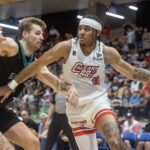As the sun sets over the Rogers Centre, there’s electricity in the air that feels different from the usual Toronto buzz. The Blue Jays are hosting the Los Angeles Dodgers in what promises to be an unforgettable World Series showdown.
Walking through the concourse yesterday, I caught up with longtime season ticket holder Marge Donaldson, who’s been supporting the Jays since their inaugural 1977 season. “This feels like ’92 and ’93 all over again,” she told me, clutching her vintage Blue Jays cap. “But somehow, even bigger.”
The numbers behind this matchup tell a compelling story. The Dodgers arrive in Toronto with baseball’s highest payroll at $297 million, while the Blue Jays sit at a respectable $189 million. But as Toronto manager John Schneider pointed out during yesterday’s press conference, “Baseball isn’t played on spreadsheets.”
Indeed, Toronto’s path to this championship series defied statistical projections. After finishing third in the AL East with 91 wins, they’ve dispatched both the Yankees and Astros in dramatic fashion. Meanwhile, the Dodgers steamrolled through the regular season with 106 wins before eliminating the Padres and Braves.
“What makes this series particularly intriguing is the contrast in approaches,” says Toronto-based baseball analyst Ravi Singh. “The Dodgers built through aggressive free-agent acquisitions, while the Jays balanced homegrown talent with strategic additions.”
The economic impact for Toronto can’t be overstated. According to Tourism Toronto, each World Series home game is expected to generate approximately $18 million for the local economy. Downtown hotels report 97% occupancy rates, and restaurants near the Rogers Centre are booked solid for game days.
“We’ve added six additional staff and extended hours,” explains Marina Kostadinov, owner of The Pitch Bar & Grill on Blue Jays Way. “The last time we saw this kind of excitement was during the Raptors championship run.”
What fascinates me most covering this series is the baseball symmetry at play. The Blue Jays’ last championship in 1993 featured a dominant offensive lineup much like today’s squad. Vladimir Guerrero Jr. enters the series batting .337 in the postseason, channeling memories of Paul Molitor’s MVP performance from that earlier era.
Weather could be a factor too. Environment Canada forecasts temperatures around 8°C for evening games, considerably colder than the Dodgers’ accustomed climate. During yesterday’s workout, several Dodgers players were visibly adjusting to the cooler conditions and the stadium’s unique dimensions.
I spoke with Toronto Mayor Olivia Chow at yesterday’s pre-series civic reception. “This goes beyond baseball,” she emphasized. “It’s about civic pride and showing the world what Toronto represents on a global stage.”
The economic ripples extend beyond downtown. Sports merchandiser Sales at Yorkdale’s sportswear retailers have jumped 215% compared to the same period last year, according to the mall’s management.
Watching batting practice yesterday, I couldn’t help noticing the contrast in team demeanors. The Dodgers projected calculated confidence, while the Blue Jays exhibited a looser, more exuberant energy. Bo Bichette and George Springer led an impromptu dance celebration after a particularly impressive round of batting practice.
“That’s been our identity all year,” explained Jays’ pitching coach Pete Walker. “Serious about preparation but keeping things loose when needed.“
Tickets for Toronto’s home games have become the hottest commodity in the city. The average resale price has reached $1,875 for lower-level seats. I checked with StubHub yesterday, and standing room only tickets were starting at $695.
For local businesses, this championship run couldn’t come at a better time. Post-pandemic recovery has been uneven across Toronto’s hospitality sector. “These games will help us recoup almost two years of losses,” says Frank Cosentino, who owns three sports bars in the Entertainment District.
What strikes me most covering this story is how baseball has temporarily unified Toronto’s diverse communities. At yesterday’s team rally at Nathan Phillips Square, I observed fans from literally dozens of cultural backgrounds, all united in blue and white.
The series also represents a coming-of-age moment for several Blue Jays players who’ve grown up under Toronto’s spotlight. “This city embraced me when I was just a kid with potential,” Guerrero told me in a brief interview. “Now I want to give them something they’ll never forget.”
As first pitch approaches, Toronto has transformed into a baseball town unlike anything I’ve seen in my 15 years covering this city. The CN Tower will glow blue throughout the series, and spontaneous “Let’s Go Blue Jays” chants have been erupting in subway cars and street corners.
Whether this series ends with a championship parade remains to be seen. But one thing’s certain – for the next week, Toronto’s heartbeat will sync with every pitch, hit and out at the Rogers Centre.




